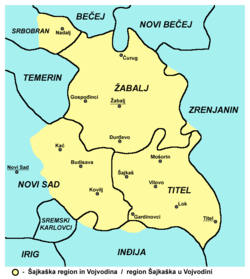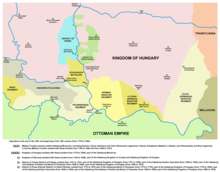
Bačka or Bácska is a geographical and historical area within the Pannonian Plain bordered by the river Danube to the west and south, and by the river Tisza to the east. It is divided between Serbia and Hungary. Most of the area is located within the Vojvodina region in Serbia and Novi Sad, the capital of Vojvodina, lies on the border between Bačka and Syrmia. The smaller northern part of the geographical area is located within Bács-Kiskun County in Hungary.
Šajkaši refers to the river flotilla troops guarding the Danube and Sava, and especially, the Port of Belgrade, against the Ottoman Empire from the 16th to the 19th century. During that period, the rivers were natural borders of the Kingdom of Hungary and Habsburg monarchy with the Ottoman Empire, part of the Military Frontier. The troops were composed of ethnic Serbs, who had special military status. Their name derives from the small wooden boat known as chaika, a type of galley.
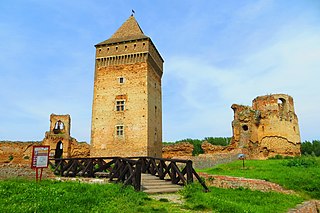
The South Bačka District is one of seven administrative districts of the autonomous province of Vojvodina, Serbia. Geographically it lies in the southern part of Bačka and northern part of Syrmia. According to the 2022 census results, it has a population of 607,178 inhabitants. The administrative center of the district is the city of Novi Sad, which is also the capital and the largest city of the Autonomous Province of Vojvodina.

Bács-Bodrog County was an administrative county of the Kingdom of Hungary from 1802 to 1920. Most of its territory is currently part of Serbia, while a smaller part belongs to Hungary. The capital of the county was Zombor.
Futog is a suburban settlement of the city of Novi Sad, Serbia, with a population of 18,642 according to the 2011 census in Serbia. It is situated in southern Bačka, 7 km away from Novi Sad.
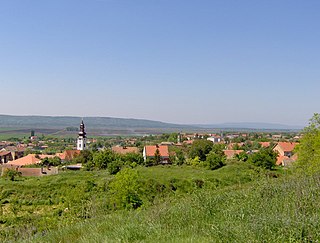
Titel is a town and municipality located in the South Bačka District of the province of Vojvodina, Serbia. The town of Titel has a population of 5,247, while the population of the municipality of Titel is 15,738. It is located in southeastern part of the geographical region of Bačka, known as Šajkaška.

Temerin is a town and municipality located in the South Bačka District of the autonomous province of Vojvodina in Serbia. The town has a population of 19,613, while the municipality has a population of 28,287.
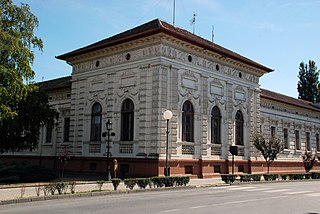
Srbobran is a town and municipality located in the South Bačka District of the autonomous province of Vojvodina, Serbia. The town is located on the north bank of the Danube-Tisa-Danube canal. The town has a population of 12,009, and the municipality of 16,317.

Žabalj is a town and municipality located in the South Bačka District of the autonomous province of Vojvodina, Serbia. In 2023 the town Žabalj has a population of 9,107 and the municipality Žabalj has a population of 25,777. It is located in southeastern part of Bačka, known as Šajkaška. All settlements in the municipality have an ethnic Serb majority.
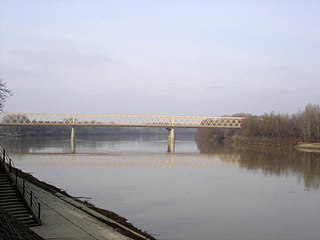
Potisje is the name of the Tisa river basin parts located in Serbia, in the autonomous province of Vojvodina. The river Tisa flows between the Banat and Bačka regions.

The Serbs of Vojvodina are the largest ethnic group in this northern province of Serbia. For centuries, Vojvodina was ruled by several European powers, but Vojvodina Serbs never assimilated into cultures of those countries. Thus, they have consistently been a recognized indigenous ethnic minority with its own culture, language and religion. According to the 2022 census, there were 1,190,785 Serbs in Vojvodina or 68.43% of the population of the province.
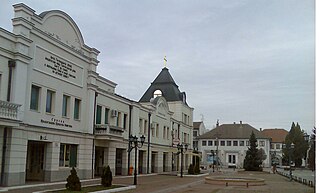
Kać is a suburban settlement of the city of Novi Sad, Serbia. The town had a population of 11,612 at the 2011 census.
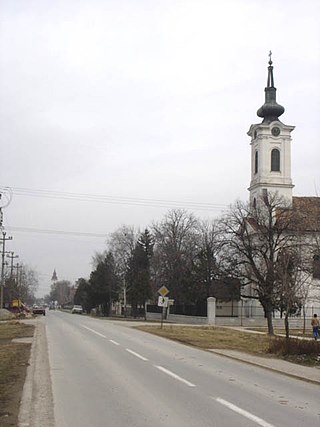
Kovilj is a suburban settlement of the city of Novi Sad, Serbia.

Kisač is a suburban settlement of the city of Novi Sad, Serbia. The settlement has a Slovak ethnic majority.

Mošorin is a village located in the Titel municipality, South Bačka District, Vojvodina, Serbia. The village has a Serb ethnic majority and its population numbering 2,569 people.

Hungarians in Serbia are a recognized national minority in Serbia. According to the 2022 census, the population of ethnic Hungarians in Serbia is 184,442, constituting 2.8% of the total population, which makes them the second-largest ethnic group in the country behind Serbs and the largest minority group. The vast majority of them live in the northern autonomous province of Vojvodina, where they number 182,321 and make up 10.5% of the province's population. Almost 99% of all Hungarians in Serbia live in the province of Vojvodina. Most Hungarians in Serbia are Roman Catholics, while smaller numbers of them are Protestant. Their cultural center is located in Subotica.

Čurug is a village located in the municipality of Žabalj, Serbia. It is situated in the Autonomous Province of Vojvodina. The village has a Serb ethnic majority and its population numbering 8,166 inhabitants. It is the biggest village in Serbia.

The military occupation of the Yugoslav region of Vojvodina from 1941 to 1944 was carried out by Nazi Germany and its client states / puppet regimes: Horthy's Hungary and Independent State of Croatia.
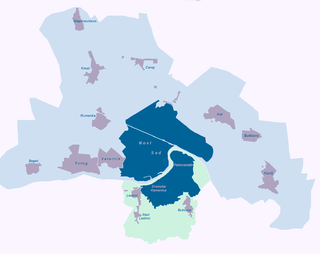
The City municipality of Novi Sad is one of two city municipalities which constitute the City of Novi Sad. According to the 2011 census results, the municipality has a population of 307,760 inhabitants, while the urban area has 250,439 inhabitants.
The history of the Serbian River Flotilla dates back to early 20th century, although its precursors originates as early as 16th century.
